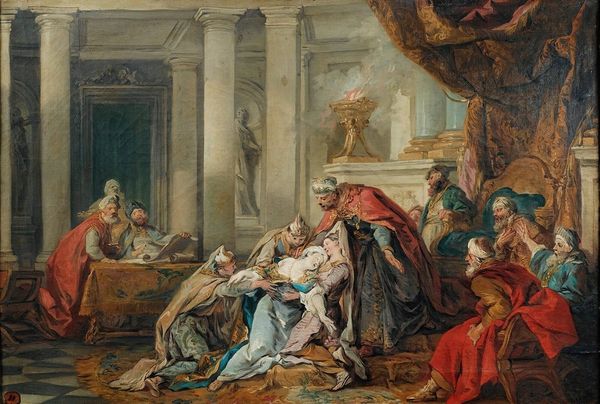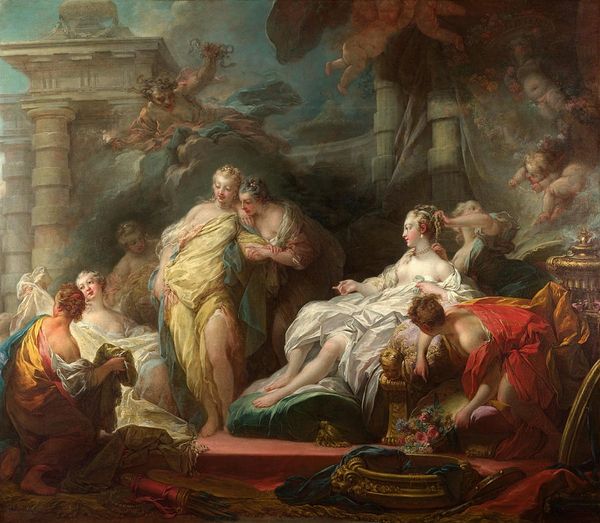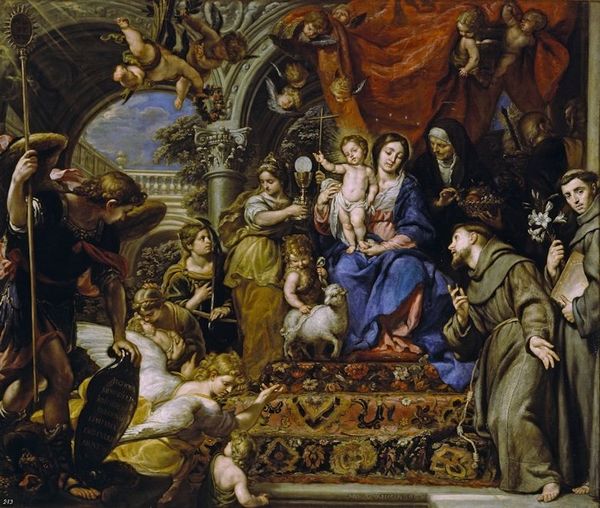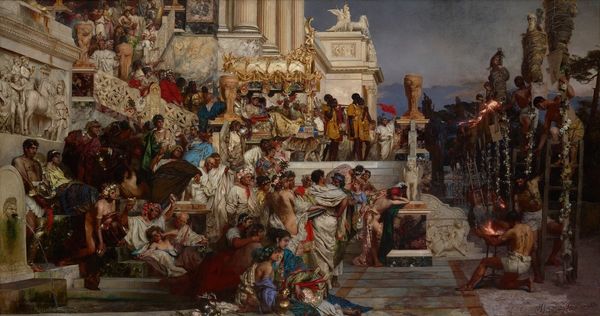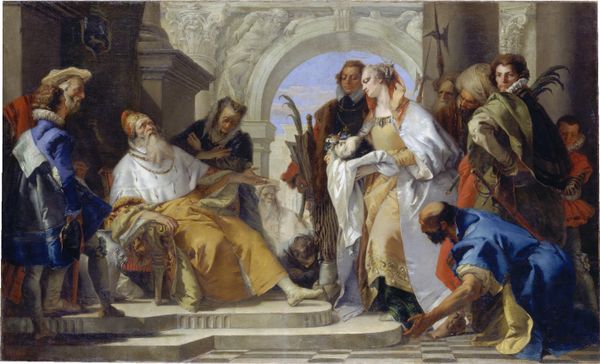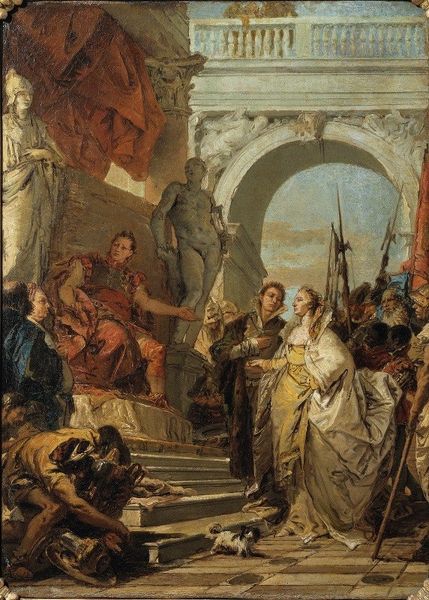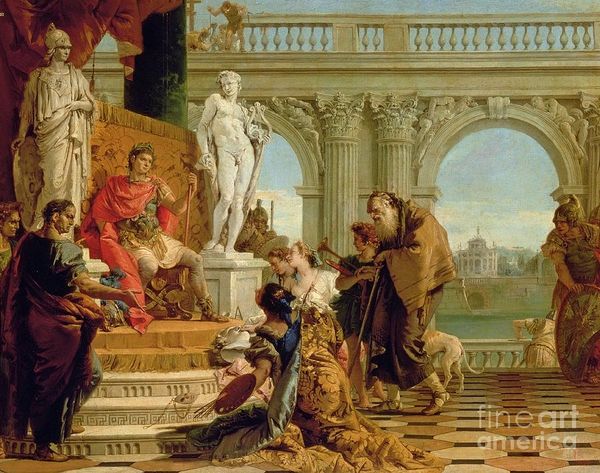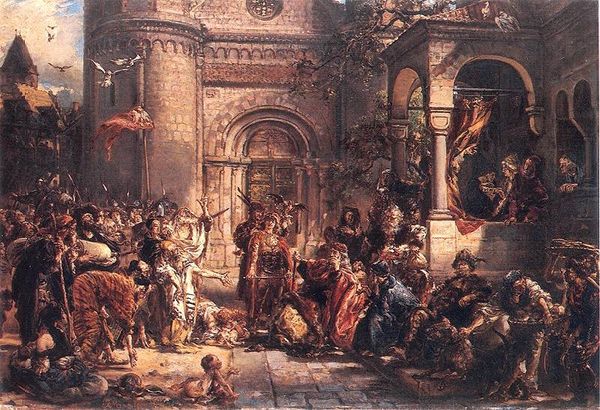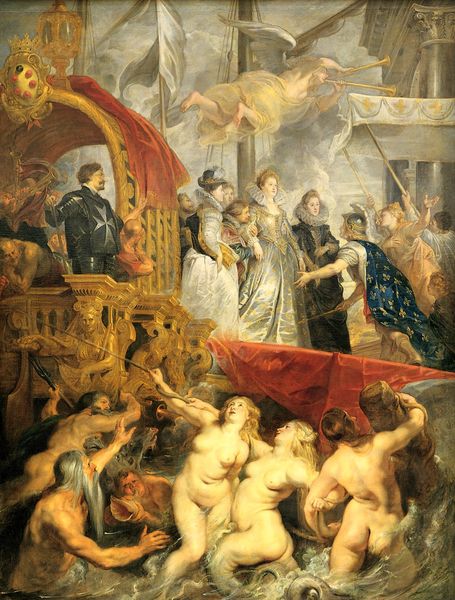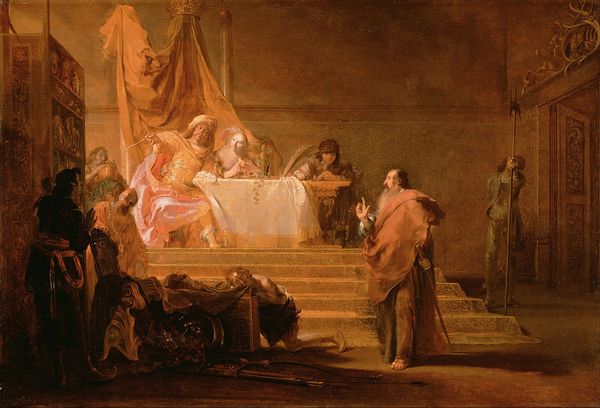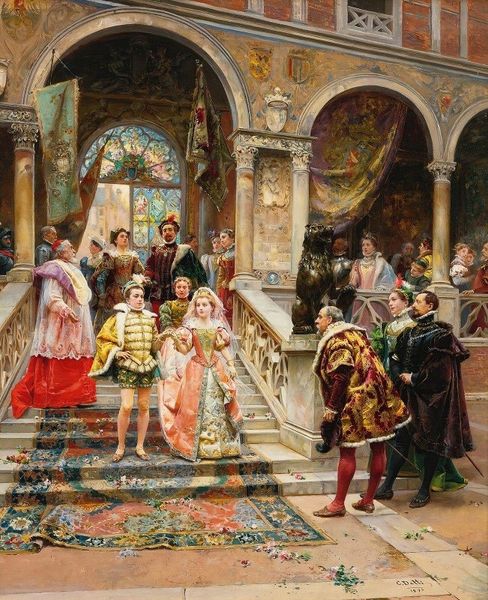
Copyright: Public Domain: Artvee
Curator: This monumental oil on canvas, "Venice Pays Homage to Caterina Cornaro," was created between 1872 and 1873 by the Austrian artist Hans Makart. It’s quite the spectacle. Editor: My first impression is pure sensory overload! The density of figures, the vibrant hues… it almost feels like a tapestry, where the paint is simply another woven material. Curator: Indeed! Makart was known for these extravagant historical scenes, which were incredibly popular during his time. This piece depicts Caterina Cornaro, the last Queen of Cyprus, who was forced to cede her kingdom to Venice in 1489. The painting presents a romanticized view of this event. Editor: Romanticized to say the least. Looking closer, I'm struck by how much texture we get just from the way the oil paint is applied. Thick impasto in the drapery, a smooth gloss on the faces... it calls attention to the materiality of representation itself. Do we know about the conditions under which he painted this work? Curator: He was something of a celebrity, establishing his studio as a destination, a site of cultural pilgrimage almost, very carefully cultivated for the elite. This played a role in how history itself was interpreted for public consumption. Editor: Which explains why he presents us not with a story of political subjugation, but of Venetian benevolence. See how Cornaro is positioned, not in mourning but as a respected, almost saintly figure being honored. And everyone is dressed as if they were heading for an opera premiere. The manipulation is flagrant. Curator: The allegory is potent. Think about what that says about the 19th century when the work was actually made: Venice’s own anxieties over lost power, perhaps? This isn’t so much about historical record and accuracy, and more about contemporary politics. Editor: Definitely, the theatrical composition draws your eye, it is supposed to overwhelm you and to direct your interpretation. Considering the role his studio played as a center of cultural life, these painting become almost a manufactured form of nationalism, the image becoming a commodity for consumption by the Venetian elite. Curator: I hadn’t considered the element of manufacturing... Fascinating to think about how that connects to this constructed vision of history. Editor: So, what started out appearing as spectacle, really encourages critical consideration about image making as a product of material conditions. Curator: Well, it’s hard to unsee this artwork the same way again! Thanks to you, I feel it now urges us to ask a crucial question: who is served by such magnificent representation?
Comments
No comments
Be the first to comment and join the conversation on the ultimate creative platform.
